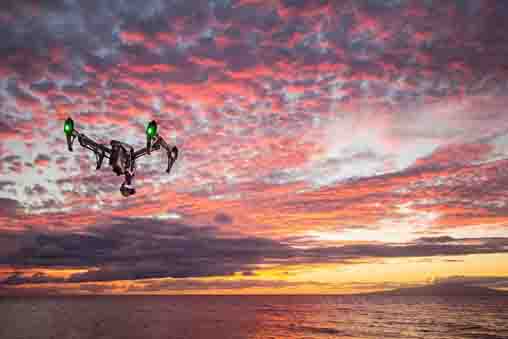This guest article was written by Liz Greene. We thought some of you might enjoy the overview. (Thanks Liz for allowing us to publish your article on our blog.)
Applications
If you broach the subject of commercial drone use in mixed company, the discussion will most likely center around the future of package delivery through companies like Amazon or Walmart. While the idea of having your new slippers delivered by drone in thirty minutes or less is exciting, it’s hardly the only application for commercial drones.
Exemptions Galore Even though commercial drone operations are technically illegal in U.S. airspace, the FAA began issuing Section 333 exemptions for commercial use last year under pressure from industry groups. Such exemptions allow companies to fly drones under a pre-established set of conditions wherein they must identify what specific drones they plan to operate, what those drones will be employed to do, and why that service is essential to the consumer market.
With every exemption the FAA authorizes, a precedent is set — giving other applicants a sense of what specifications and operations are likely to be given a green light. For instance, recent exemptions have opened the door for popular mainstream drones with professional capabilities, such as DJI’s Phantom 3 model. As of December 18, 2015, there have been 2,672 Section 333 exemptions issued — and the overwhelming majority of them are to companies using DJI quadcopters. However, companies like UAV-America are manufacturing drones specifically for commercial application — opening the door to even more innovation in drone technology.
But it still begs the question: What are these nearly 3,000 companies doing with their drones — and how does it benefit the average American?
Agriculture Farmers have found a fabulous new tool in drones. The precision agriculture movement has been using drone technology to survey fields, detect crop damage, and monitor the distribution of water and fertilizer — leading to an increase of yields and money saved. Eventually, farmers will be able to use drones to apply a precise amount of pesticides, water, or fertilizer to crops, which is better for both the environment and the farmer’s bottom line.
Inspection While inspection doesn’t necessarily sound like a dangerous task, depending on the industry, it can be potentially deadly. That’s why companies like PPL Utilities and Consumers Energy are using drones to inspect power lines and wind turbines. UAVs make work on these dangerous pieces of equipment more efficient, less expensive, and far safer for workers.
Photography For realtors trying to sell large properties, and golf courses itching to lure in new members, aerial photography is essential. However, hiring helicopters is not only expensive, it creates some pretty intense noise pollution. That’s where one of the many drone photography services comes in. Consumers can hire a drone photographer to capture aerial views of everything from construction sites to weddings.
The Future The U.S. has the one of the most occupied and complex airspaces in the world, and adding thousands of UAVs to the mix means congestion will be a larger problem than it already is. Putting further pressure on an air traffic control network that is already overextended has the potential for disaster. But for now, the FAA is just trying to keep tabs on which pilot is operating what drone — they’ll cross that other bridge when they come to it.
Liz Greene is a dog loving, beard envying, pop culture geek from the beautiful city of trees, Boise, Idaho. You can catch up with her latest misadventures on Instant Lo or follow her on Twitter @LizVGreene.
If you broach the subject of commercial drone use in mixed company, the discussion will most likely center around the future of package delivery through companies like Amazon or Walmart. While the idea of having your new slippers delivered by drone in thirty minutes or less is exciting, it’s hardly the only application for commercial drones.
Exemptions Galore Even though commercial drone operations are technically illegal in U.S. airspace, the FAA began issuing Section 333 exemptions for commercial use last year under pressure from industry groups. Such exemptions allow companies to fly drones under a pre-established set of conditions wherein they must identify what specific drones they plan to operate, what those drones will be employed to do, and why that service is essential to the consumer market.
With every exemption the FAA authorizes, a precedent is set — giving other applicants a sense of what specifications and operations are likely to be given a green light. For instance, recent exemptions have opened the door for popular mainstream drones with professional capabilities, such as DJI’s Phantom 3 model. As of December 18, 2015, there have been 2,672 Section 333 exemptions issued — and the overwhelming majority of them are to companies using DJI quadcopters. However, companies like UAV-America are manufacturing drones specifically for commercial application — opening the door to even more innovation in drone technology.
But it still begs the question: What are these nearly 3,000 companies doing with their drones — and how does it benefit the average American?
Agriculture Farmers have found a fabulous new tool in drones. The precision agriculture movement has been using drone technology to survey fields, detect crop damage, and monitor the distribution of water and fertilizer — leading to an increase of yields and money saved. Eventually, farmers will be able to use drones to apply a precise amount of pesticides, water, or fertilizer to crops, which is better for both the environment and the farmer’s bottom line.
Inspection While inspection doesn’t necessarily sound like a dangerous task, depending on the industry, it can be potentially deadly. That’s why companies like PPL Utilities and Consumers Energy are using drones to inspect power lines and wind turbines. UAVs make work on these dangerous pieces of equipment more efficient, less expensive, and far safer for workers.
Photography For realtors trying to sell large properties, and golf courses itching to lure in new members, aerial photography is essential. However, hiring helicopters is not only expensive, it creates some pretty intense noise pollution. That’s where one of the many drone photography services comes in. Consumers can hire a drone photographer to capture aerial views of everything from construction sites to weddings.
The Future The U.S. has the one of the most occupied and complex airspaces in the world, and adding thousands of UAVs to the mix means congestion will be a larger problem than it already is. Putting further pressure on an air traffic control network that is already overextended has the potential for disaster. But for now, the FAA is just trying to keep tabs on which pilot is operating what drone — they’ll cross that other bridge when they come to it.
Liz Greene is a dog loving, beard envying, pop culture geek from the beautiful city of trees, Boise, Idaho. You can catch up with her latest misadventures on Instant Lo or follow her on Twitter @LizVGreene.

